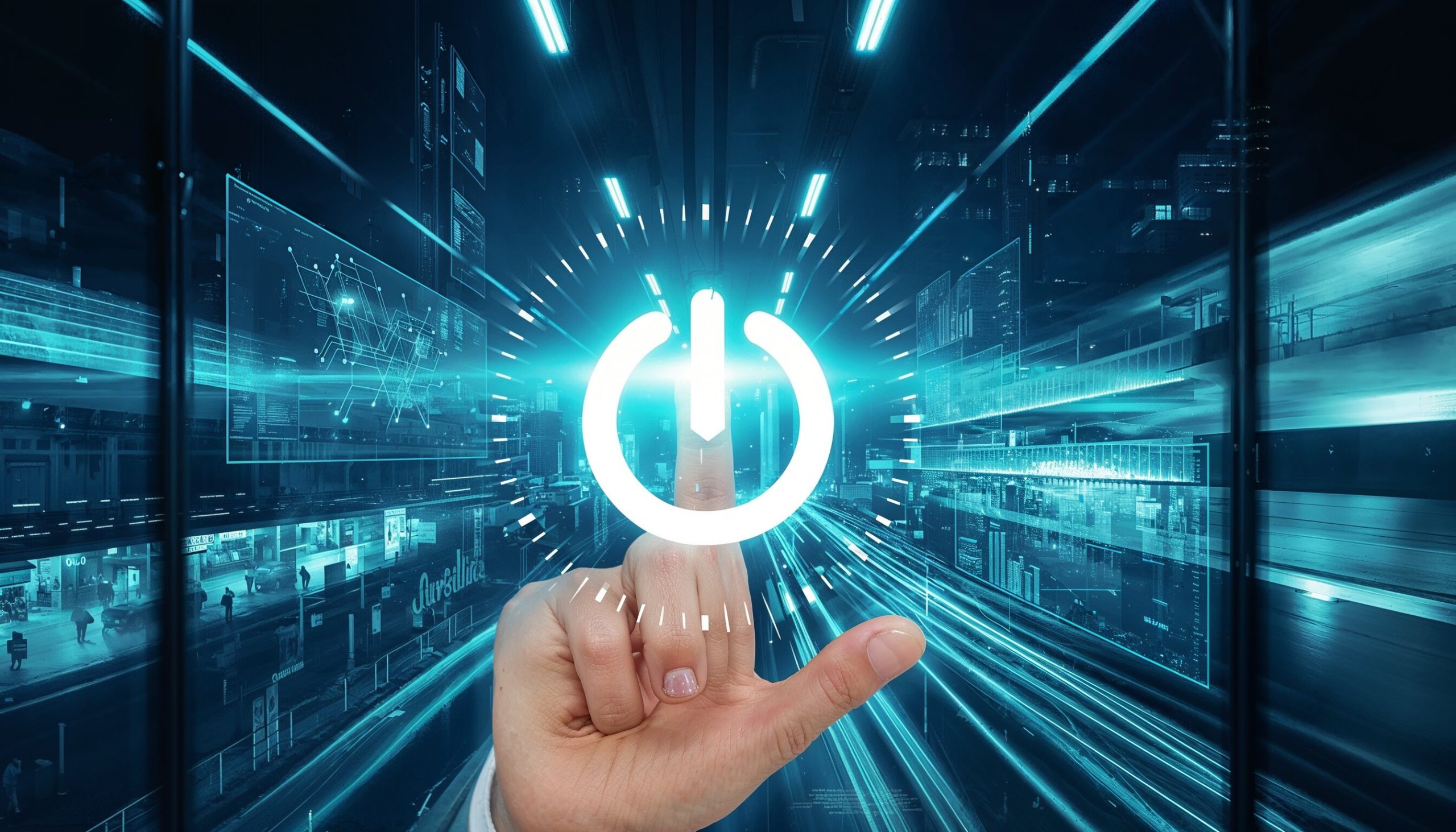For decades, the goal of search was simply to win the blue link (climbing Google’s ranked list). But today, the digital landscape is undergoing a significant revolution.
In todays society where ChatGPT, Google’s AI Overviews, Perplexity, and Gemini are becoming the go-to sources for instant information, the rules have fundamentally changed. These powerful generative AI systems don’t just link to websites anymore. They synthesize, summarize, and instantly generate complete answers from various sources at once.
This shift demands a new strategic approach called Generative Engine Optimization (GEO).
GEO is the essential, emerging discipline focused on preparing your content not just to rank on a list, but to be reliably cited, summarized, and recommended by these influential AI engines. If your content isn’t visible to the AI, it risks being written out of the conversation entirely.
In this article, we’ll explore what GEO is, why it matters critically in 2025 and beyond, how it fundamentally differs from traditional SEO, and, most importantly, the strategic steps you can take today to optimize your content for this new search paradigm.
What Is Generative Engine Optimization (GEO)?
Generative Engine Optimization (GEO) is the strategic process of tailoring your digital content so that it is more likely to be selected, correctly understood, and cited by AI-driven systems like ChatGPT, Google Gemini (AI Overviews), and Perplexity. (Source: Adsamurai)
The fundamental difference lies in the output:
- Traditional SEO focuses on optimizing for link-based rankings in a list of ten blue links.
- GEO focuses on content quality and structure that generative models can analyze semantically and trust enough to quote directly. (Source: Search Atlas)
The ultimate goal of GEO is to ensure your brand becomes a verified, embedded source within the AI-generated response itself.
The term Generative Engine Optimization (GEO) was first formally introduced in a landmark 2023 academic paper by Aggarwal, Murahari, et al. This research established GEO as a “black-box optimization framework,” designed specifically to help content creators measure and improve their visibility within these AI-driven answers. (Source: arXiv)
This paradigm shift requires creators to adapt their existing strategies to maintain discoverability in a world increasingly dominated by the so called “zero-click” answers.
Why GEO Matters Now: The Structural Shift in Search

The shift to Generative Engine Optimization is not a temporary trend, but a fundamental, structural change in how the internet delivers information. Here is why prioritizing GEO is critical today and for the years ahead:
1. The Fundamental Shift to Zero-Click Search
Traditional web search is actively being supplemented (and often even replaced) by AI-powered interfaces. Users are consistently turning to LLMs (Large Language Models) and AI Overviews with conversational questions, and these models respond with comprehensive, synthesized summaries. This means that a user’s intent is often satisfied directly on the search page, resulting in fewer clicks to your website. Therefore being part of the AI’s answer is now mandatory for maintaining visibility! (Source: Arc Intermedia)
“We analyzed 300,000 keywords and found that the presence of an AI Overview in the search results correlated with a 34.5% lower average clickthrough rate (CTR) for the top-ranking page, compared to similar informational keywords without an AI Overview.” (Source: Ahrefs)
2. AI Overviews: The New, Limited Real Estate
When generative models provide an overview, they are highly selective, often citing only a handful of sources to build their response. This “real estate” at the very top of the search result page is significantly more limited and competitive than the top ten organic rankings. If your content is not specifically structured for GEO, you risk being left out, even if you still hold a high traditional SEO rank!
3. Reputation and Authority in the Age of AI
AI systems are programmed to prioritize and trust content that demonstrates high E-E-A-T (Experience, Expertise, Authoritativeness, and Trustworthiness). If an AI system cites your content, it acts as a powerful stamp of credibility and validation to the user. GEO rewards authoritative, well-structured content, making it an essential component of your brand-building strategy in the AI era. (Source: Arc Intermedia)
4. The Path to High-Value Traffic
While AI Overviews reduce overall clicks for simple informational queries, the clicks that do come from a citation are often higher quality and higher intent. A user clicking a citation link from an AI summary is typically seeking deeper validation or ready to take an action. GEO ensures you are receiving these valuable, pre-qualified clicks rather than relying on volume from generic searches. (Source: Stakque)
How GEO Is Different from Traditional SEO
The shift from Traditional SEO to Generative Engine Optimization (GEO) represents a fundamental change in content strategy: from prioritizing discovery to prioritizing citation. It is most effective to view GEO not as a replacement for SEO, but as an essential evolution that augments your existing strategy to meet the demands of AI-first search.
Here is a breakdown of the core differences in approach:
The Strategic Shift: SEO vs. GEO
| Aspect | Traditional SEO | Generative Engine Optimization (GEO) |
| Primary Goal | Rank on SERPs (Search Engine Results Pages) to earn a click. | Be Cited or directly used as a source in AI-generated answers. |
| Main Focus | Technical Signals: Keywords, backlinks, title tags, basic page structure. | Semantic Signals: Semantic clarity, defined entities, structured data, Trustworthiness (E-E-A-T). |
| Content Style | Page-Oriented, often optimized for click-through and internal linking. | Conversational, well-sourced, and easy for LLMs to read and synthesize quickly. |
| Key Metrics | Rankings, Organic Traffic, Click-Through Rate (CTR). | Citation Rate, AI-Visibility Score, and semantic clarity. |
The New Content Mandate
The transition means that where SEO rewarded complex keyword density, GEO rewards explicit knowledge and structure. Your content must be immediately understood by the AI model. For example, if you are defining a concept, you must use clear, authoritative language and robust sourcing so the LLM can confidently select and cite your definition in its summary.
This move demands that content creators rethink every piece of new material through the lens of AI trust and processability.
7 Core Strategies for Effective GEO

To win the citation, not just the click, content strategy must evolve too. These seven actionable pillars ensure your content is reliably selected, trusted, and synthesized by AI engines:
Pillar 1: Content Clarity & Processability
- Structure Content Semantically: Utilize clear, logical heading hierarchies (H1, H2, H3) to help AI detect key topics and relationships. Move beyond creative headlines to create explicit signposts that guide the LLM’s understanding.
- Front-Load Direct Answers: When addressing a question, always provide the definitive answer in the first 1-2 sentences. LLMs favor content that delivers an accurate, immediate answer before elaborating on context.
- Favor Conversational Language: Write as though you are having a conversation. GEO benefits from the same natural phrasing and tone users employ when querying AI. Incorporate clear Question-Answer (FAQ) formats to mimic how LLMs structure their own responses.
Pillar 2: Authority and Trust Signals (E-E-A-T)
- Strengthen Authority with Data and Citations: LLMs prioritize credible, factual information. Back up every major claim with specific data, statistics, and expert research. Link directly to studies, whitepapers, or trusted publications to reinforce your content’s trustworthiness and establish expertise.
- Optimize for Freshness and Relevance: Maintain current content. AI-driven systems often favor recent, clearly timestamped content. Systematically refresh statistics, update links, and ensure all claims are backed by current sources to signal topical relevance.
Pillar 3: Technical Trust and Distribution
- Apply Structured Data and Schema Markup: Use machine-readable formats like Schema markup (FAQ, Article, Entity) to explicitly communicate the structure and context of your content to the AI. This is a crucial signal for entity recognition and synthesis accuracy.
- Build AI-Aware Distribution: Your brand’s presence across the digital ecosystem influences AI citations. Encourage authoritative off-site mentions and engage in high-authority public forums, Q&A sites, or niche communities that LLMs actively crawl. AI looks beyond your owned domain for confirmation of expertise, which is a point many easily overlook.
“Aim for a balanced ecosystem of mentions – authoritative content on your own site and endorsements/discussions on credible third-party platforms.” (Source: Search Engine Land)
Measuring the Shift: New GEO Metrics
Since traditional SEO metrics like keyword position are insufficient, success in GEO requires tracking new Key Performance Indicators (KPIs):
- AI Citation Rate: The frequency with which your content is explicitly named or linked as a source in an AI-generated answer. (The new Position 1.)
- AI Visibility Score: A holistic measure of your brand’s presence across AI platforms (e.g., ChatGPT, Gemini, Perplexity) relative to competitors.
- Semantic Clarity Score: An internal metric used to ensure your content is unambiguous and easy for LLMs to interpret correctly, reducing the risk of misinterpretation.
Future Trends: What’s Next for GEO
The landscape of Generative Engine Optimization (GEO) is constantly changing. To stay ahead, marketers and content creators must understand these key trends shaping the future of AI search:
1. Optimization for Context and Role
Future GEO will demand a highly nuanced understanding of the user. Emerging research is focusing on Role-Augmented GEO, which involves optimizing content not just for a topic, but for the specific user persona and intent (e.g., decision-maker, beginner, expert). The goal is to make your content the most relevant source when an AI is answering from a specific “role” or perspective, dramatically increasing citation quality and relevance. (Source: arXiv)
2. Multimodal and Engine-Specific Tactics
Optimization is moving beyond pure text:
- Multimodal GEO: As AI models become truly multimodal—synthesizing information from text, images, and video—optimization will necessarily extend to captions, video transcripts, and image semantics. Content creators will need to ensure visual and audio assets are just as parsable and authoritative as text. (Source: arXiv)
- Engine-Specific Optimization: Current studies already indicate that different generative engines (e.g., Google’s AI, Perplexity, custom LLMs) exhibit differing biases for domain diversity, content freshness, and phrasing. GEO tactics will become specialized, requiring content to be slightly adapted based on which generative engine is the primary target.
“The analysis reveals that engine choice fundamentally alters the information ecosystem a user encounters. Therefore, a one-size-fits-all approach is ineffective.” (Source: arXiv)
3. Evolution of GEO Metrics and Measurement
The way we measure success in GEO will also evolve. It won’t be enough to just be cited. New metrics will emerge focusing on quality and prominence:
- Contextual Citation Quality: Metrics will track how you are cited: whether your content is used for the definitive answer, a supporting detail, or a counter-argument.
- Depth and Prominence: Future systems will measure the prominence, context, and depth of the citation within the AI-generated answer. Being cited as the primary source for a critical piece of data will become the ultimate measure of GEO success.
Implementation Roadmap: How to Get Started with GEO

Starting with Generative Engine Optimization (GEO) doesn’t require overhauling your entire site overnight. It begins with a strategic audit and structured improvements. Follow this six-step roadmap to begin securing your brand’s visibility in AI search today:
Step 1: Strategic Content Audit
- Action: Identify your high-value, cornerstone content. Specifically long-form guides, comprehensive reports, or articles that already demonstrate deep expertise (high E-E-A-T).
- Strategic Goal: Focus on resources where the potential for AI citation is the highest. Don’t waste time on low-value pages.
Step 2: Formalize Content Structure
- Action: Rework the chosen pages to have crystal-clear structural logic. This means ensuring headings (H1, H2, H3) form a strict hierarchy and incorporating explicit FAQ sections or “Key Takeaways” boxes.
- Strategic Goal: Maximize semantic parsability. The cleaner the structure, the easier it is for the LLM to analyze, synthesize, and extract key facts accurately.
Step 3: Integrate Authoritative References
- Action: Research and insert up-to-date industry studies, academic papers, or direct expert quotes. Ensure all claims are supported by robust, externally verifiable sources.
- Strategic Goal: Boost Trustworthiness (T in E-E-A-T). LLMs rely heavily on credible, factual sourcing to validate their answers before citing them.
Step 4: Implement Technical Schema Markup
- Action: Use structured data (like FAQ schema, Article schema, and Entity schema) on the audited pages.
- Strategic Goal: Make the meaning of your content machine-readable. Schema tells the AI what everything is (a person, a definition, a step) making the citation process faster and more reliable.
Step 5: Monitor AI Visibility
- Action: Set up tracking for the new GEO metrics, focusing on AI citations or visibility scores. Utilize third-party tools or custom internal dashboards designed for this purpose.
- Strategic Goal: Establish a baseline. You cannot optimize what you cannot measure. Understanding where you are cited now allows you to measure the ROI of your GEO efforts effectively.
Step 6: Iterate Continuously
- Action: Treat GEO as an ongoing process. Regularly update your content, test different formats (e.g., definitions vs. lists), and refine your strategy based on how the generative AI systems continue to evolve.
- Strategic Goal: Maintain Content Freshness and Adaptability. The AI search landscape is constantly changing and evolving, meaning your strategy must remain flexible and up to date as well.
Conclusion: The New Mandate for Visibility
Generative Engine Optimization (GEO) isn’t just the “new SEO”. It is the fundamental shift in how brands and marketers will maintain visibility in an AI-driven world.
While traditional SEO remains a vital foundation, GEO is now the essential strategy to ensure your content is actively understood, trusted, and cited by generative AI systems. This transition marks a critical moment: the earlier you embrace this paradigm shift and adapt your content, the better are your chances of securing your brand’s presence in the future search landscape.
The age of simply “winning the blue link” is over. The era of winning the citation has just begun!
Ready to future-proof your digital strategy and ensure your brand remains relevant? Now is the time to act!
- Start the Audit: Immediately run a GEO audit of your top-performing, high-E-E-A-T articles.
- Experiment: Implement semantic restructuring, add specific schema markup, and integrate new, rich citations.
- Measure & Share: Track your new AI visibility metrics. If you discover surprising insights or breakthrough tactics, share them with us in the comments below or reach out to us at TechNexus Media. We want to hear how GEO is shaping your content strategy.
Frequently Asked Questions (FAQ)
| Question | Answer |
| Q1: Is GEO replacing traditional SEO? | Not exactly. GEO is an evolution of SEO, not a replacement. While SEO focuses on ranking and clicks, GEO targets visibility and trust inside AI-generated answers. |
| Q2: Which generative systems does GEO apply to? | GEO strategies are designed for all major LLM-powered systems, including Google Gemini (AI Overviews), ChatGPT, Claude, and Perplexity. |
| Q3: What kinds of metrics should I use for GEO? | Beyond traditional clicks and rankings, you should measure AI Citation Rate, the Visibility Score in generative responses, and internal Semantic Clarity scores. |
| Q4: Will my existing SEO-optimized content work for GEO? | It’s a solid starting point, but it likely needs adaptation. For GEO, content must be rigorously restructured for clarity, include strong sources, and utilize schema markup to be machine-readable. |
| Q5: Are there any risks or downsides to GEO? | Yes. Key challenges include the opaque nature of generative engines, the potentially higher cost of creating hyper-specific content, and the risk of optimizing purely for AI rather than for human value. |












